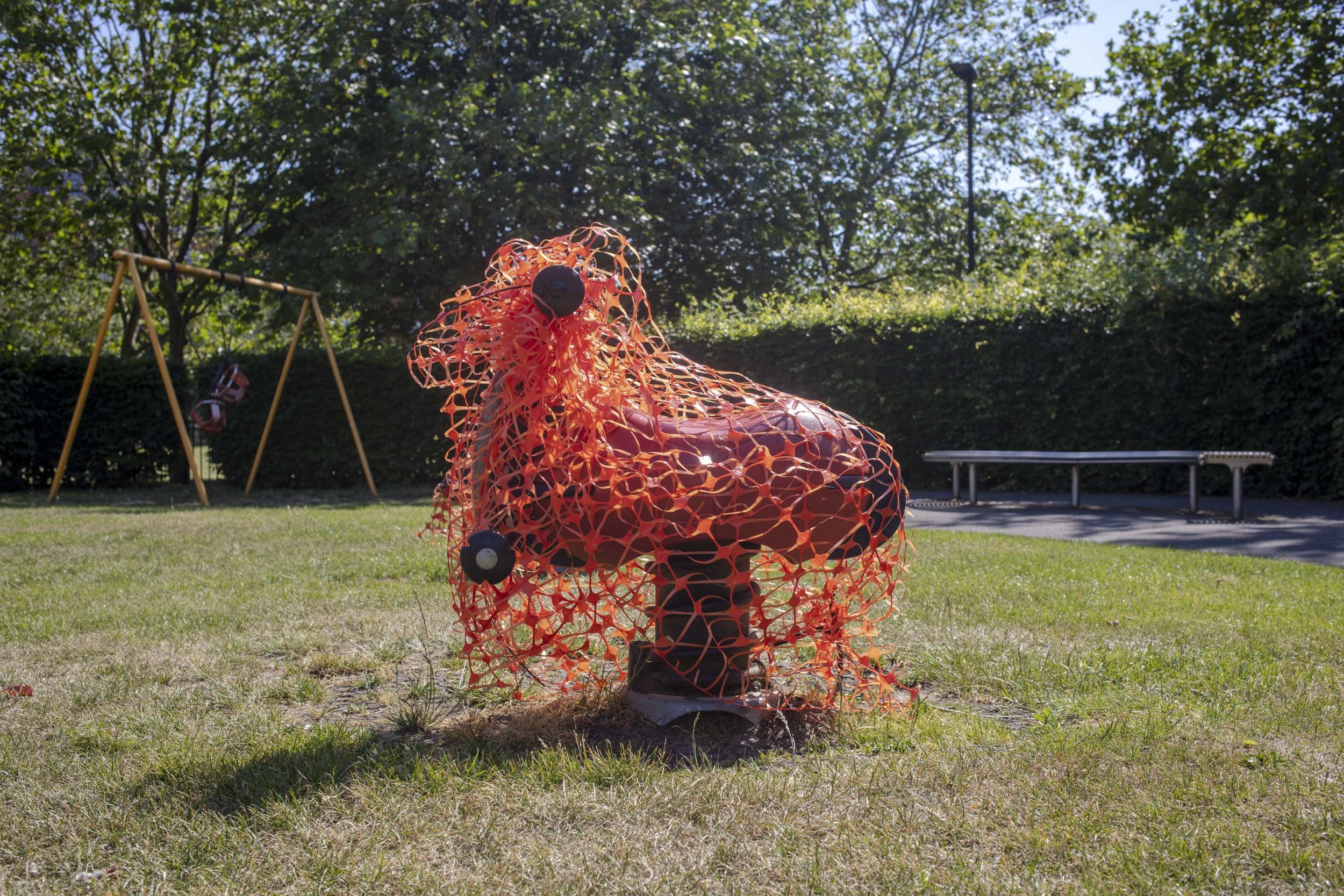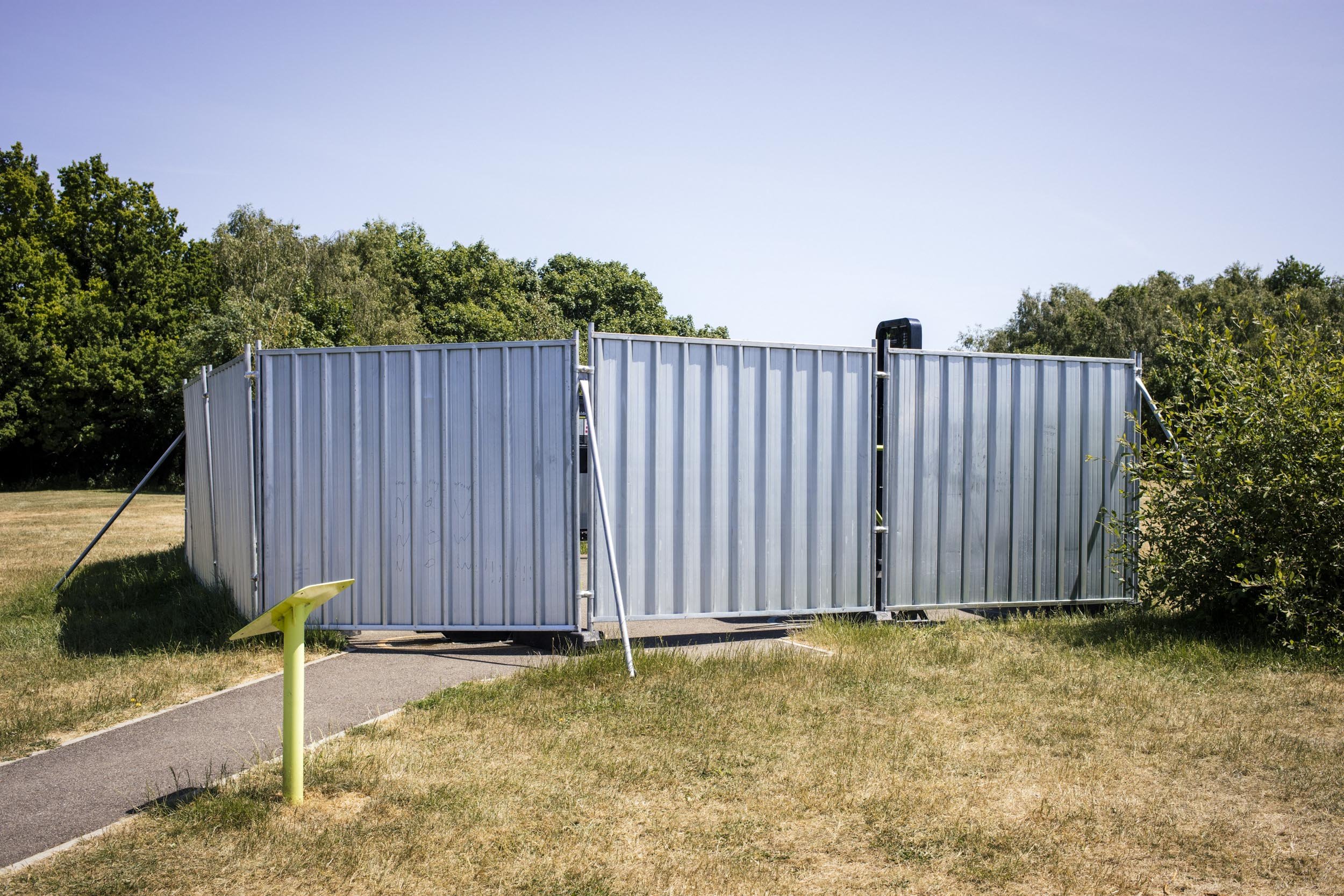Closed
During the lockdown, one of the things that struck me the most was the closure of communal areas—the playgrounds, sports courts, and picnic areas that once thrived with activity and laughter. As I travelled through the eerie silence of London during that time, I began to notice how different boroughs used various materials to effectively shut down these places and keep people away. Some areas were cordoned off with brightly coloured plastic tape, others with heavy chains or padlocks. In certain cases, large wooden boards or barriers were placed over entrances or equipment, making sure they couldn’t be accessed. It felt like the physical world had been paused—familiar places rendered off-limits and silent.
I thought about how the caretaker’s job had evolved from ensuring the equipment was safe to use, to ensuring it was unusable. The once joyful task of maintaining these spaces for community enjoyment was replaced with the duty of locking them down, almost as if the spaces themselves had become hazardous. These landscapes, once vibrant parts of our neighbourhoods and centres of social interaction, had effectively been shut off. The effect was surreal; the slides, swings, benches, and picnic tables suddenly transformed into static, untouchable objects. They no longer existed as elements of play or leisure but as symbols of isolation, turned into public sculptures—frozen in place, yet unreachable.
What struck me even more was that this was the only time I could photograph these spaces without people. Normally, it’s impossible to capture a playground or park empty, with children playing and families gathering. But during the lockdown, they became strange, abandoned installations, devoid of life. The unnatural quietness, combined with the sight of brightly coloured playground equipment locked behind barriers or marked with caution tape, gave the spaces an almost post-apocalyptic feel. It was as though the energy had drained out of these places, leaving behind only the hollow shells of what they used to be.





































